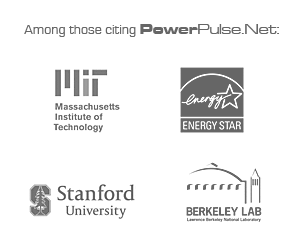Semiconductor Solutions for Smart Grid Distribution Automation

Smart Grid Distribution Automation (“Smart Grid 2.0”) plays a key role in the integration and management of new technologies such as electric vehicle charging, distributed (renewable) generation, energy storage, and other Distributed Energy Resources (DER).
Smart Grid Distribution Automation (“Smart Grid 2.0”) plays a key role in the integration and management of new technologies such as electric vehicle charging, distributed (renewable) generation, energy storage, and other Distributed Energy Resources (DER).
Most of the effort in the Smart Grid deployment so far has been focused on the deployment of Advanced Metering Infrastructure (AMI) and the related roll-out of Smart Meters to a large residential, commercial, and industrial customer base. With the increasing penetration of Smart Meters, the industry focus is now shifting to the automation of the power grid infrastructure.
The generation and transmission side of the power grid has been highly automated for decades with SCADA systems helping to manage power flows and assets from utilities’ central control centers. The utilities’ visibility of the grid and their ability to directly monitor and control the system, however, has so far ended mostly at the distribution substation. During the last few decades, the distribution power system has seen little technological advancement beyond the substation. Some equipment such as distribution transformers has been in operation for over 40 years.
The increasing penetration of DERs and the resulting bi-directional power flows and intermittent generation are creating new challenges for the distribution system, such as increased wear-and-tear on equipment, malfunction or even damage of protection equipment, and degraded power quality. At the same time, communication, control, computation, and sensor devices and systems have seen a tremendous advancement and cost decline. This allows for an economical deployment of new Distribution Automation applications such as Volt/Var Optimization (VVO) or Fault Location, Isolation, Service Restoration (FLISR), and Advanced Asset Management (AAM).
Semiconductors are a key technology in automating substations and feeder lines, reaching from high-power electronics based controllers & actuators to devices enabling the communication between field-based sense & control devices and distribution control centers.

Typical Distribution Feeder
Secure Communication
On the distribution and consumer level of the grid, we can find applications such as Programmable Communication Thermostats (PCT) with no or low-level enhanced software-based Smart Grid security. Mission-critical grid applications such as generation, systems control, and protection require a higher-level security approach based on hardware. Certified Common criteria EAL5+ Hardware Security Modules are dedicated components that can also be used to enhance security of existing smart meters. They incorporate features such as PKI crypto algorithms, protected data storage, and an execution environment for security functions.
Smart Metering
The most prominent device in the Smart Grid is the Smart Meter. If critical timing requirements are met, existing Smart Meters can be utilized to generate additional measurement points in distribution systems. A smart meter system is comprised of metrology, data storage, user applications, and communications functionalities. It can be either realized through a single chip or various “companion ICs” such as microcontrollers, communication ICs, current sensors, RF transceivers, and power management solutions. Latter can be partitioned into high-efficiency switched-mode power supplies (SMPS) for ac/dc conversion, dc/dc converters, linear voltage regulators, and their controls and drivers.

Block Diagram: Generic Smart Meter SystemBlock Diagram: Generic Smart Meter System
Sensors
Today, operators have little visibility downstream beyond the substation and monitoring equipment is placed only at critical locations in system. With sensing and communication becoming increasingly affordable, this is changing. Current sensors can be deployed “downstream” closer to the consumer, either as part of a smart meter or in the form of “bird-on-wire sensors” clamped around distribution wires or placed on distribution pole tops. These sensors can be implemented as very small and fully integrated devices that enable galvanically-isolated measurements, have a high level of accuracy, and incorporate on-chip stress and temp compensation.

Block Diagram: Current Sensor TLI4970
Power Electronics
Actuators in today’s distribution system are mostly electro-mechanical but new concepts and potentially disrupting technologies based on power electronics are emerging. Distributed Static Compensators (D-STATCOM) have already seen field deployment and other applications such as the Solid-State Transformer (SST) are currently in development. Today, VVO is accomplished through On-Load Tap Changers (OLTC), Voltage Regulators, and Capacitor Banks. In future, it can be realized “downstream” at the consumer level through smart inverters that incorporate decentralized reactive power and voltage control and a communication link to the utility. Specific application requirements on the power side can be addressed through a multitude of power semiconductor technologies such as MOSFETs, IGBTs, and Wide Band Gap (WBG) switches. New technologies such as Silicon Carbide (SiC) can help accomplish very high efficiencies and a high level of robustness.

Power Semiconductors: Power by Application vs Frequency
Conclusion
Semiconductors can help enable many of the new and exciting Smart Grid Distribution Automation applications. Their performance, robustness, and reliability is continuously improving, matching the stringent requirements of the utility industry by leveraging experience in high-volume industries such as automotive, where long lifetimes, lifecycles, and high levels of quality are an integral part of the design and manufacturing process.
























